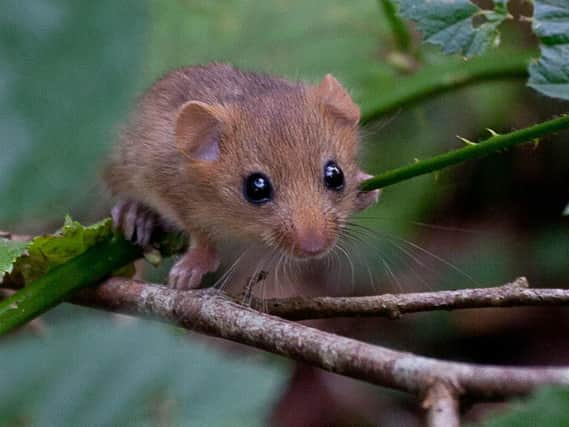Landmark reached in bid to reintroduce the dormouse to the nation's woodlands


And as the campaign to protect the environment has reached the top of the global political agenda, efforts are under way to step up grassroots conservation across the North of England
A scheme to reintroduce one of Britain’s best-loved mammals has reached a milestone – 1,000 hazel dormice have now been released into woodland sites in the UK, including locations in Yorkshire.
Advertisement
Hide AdAdvertisement
Hide AdMeanwhile, wildlife lovers in the region are also being urged to take part in a wide-ranging survey this weekend to pinpoint the number of species in Yorkshire.
The wildlife charity, the People’s Trust for Endangered Species (PTES), announced today that the dormice reintroduction programme, which started in 1993, has reached the 1,000-dormouse milestone after 30 of the creatures were released in a woodland in Lancashire.
Ian White, the dormouse and training officer at the PTES, which has been coordinating the hazel dormice plan, said: “Reintroductions are crucial to the long-term recovery of many species, but particularly hazel dormice as their decline has been so dramatic.
“Our first reintroduction took place in 1993, so we are thrilled that this year we’re releasing our 1,000th dormouse.
Advertisement
Hide AdAdvertisement
Hide Ad“This is a great milestone for conservation and a huge moment for hazel dormice in Lancashire too, as there are no known populations currently living there.”
Previous re-introductions have taken place in Wensleydale in 2016 and in Freeholders Wood, near Aysgarth waterfalls, in the Yorkshire Dales, in 2008.
Officials from the PTES, along with partners from the Government agency, Natural England, and Back On Our Map at the University of Cumbria have now released 15 breeding pairs or trios of the rare animals into an undisclosed location in the Arnside and Silverdale Area of Outstanding Natural Beauty.
The latest releases are part of a wider landscape-scale “back on our map” project to reinstate 10 locally threatened or extinct native species, including hazel dormice, back into the area.
Advertisement
Hide AdAdvertisement
Hide AdThe number of hazel dormice has fallen by more than half since 2000 and are considered extinct in 17 English counties.
Loss of natural woodland and hedgerow habitats and changes to traditional practices such as coppicing trees are thought to be behind the decline.
Releasing dormice into correctly-managed woodland is crucial to bring the species back from the brink, the PTES said.
Meanwhile, directors at the Yorkshire Wildlife Trust have challenged the public to count and record the wildlife that lives in and around their homes as the Great Yorkshire Creature Count returns for a second year this weekend.
Advertisement
Hide AdAdvertisement
Hide AdLast year, 4,500 people took part in the survey and recorded a total of 13,500 sightings of more than 1,400 species, ranging from bats and hedgehogs to toads, pictured, and butterflies.
The count will take place for 24 hours from noon on Saturday, and more details are available at www.ywt.org.uk online.
Looking for hazel dormice? They have a body length of six to nine centimetres and a tail of similar length. They usually reside in deciduous woodland and hedgerows.